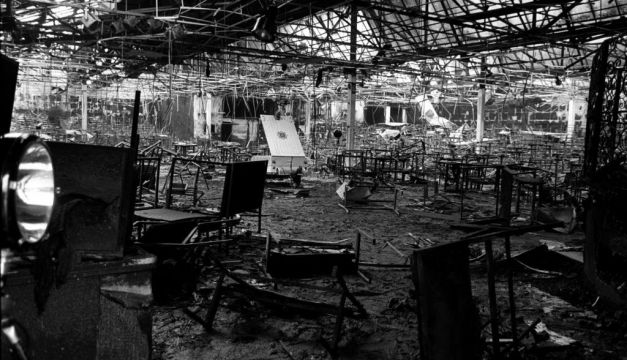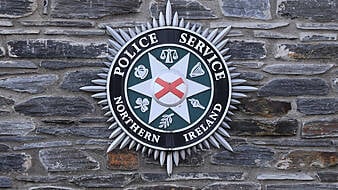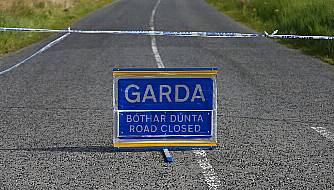The enormity of the situation at the Stardust nightclub was brought home to a garda on duty in Coolock Station on the night of the fire when he asked a colleague on site how many ambulances were required and was told “whatever you can get”, an inquest has heard.
“This was something that we had never experienced previously,” said former garda sergeant Thomas Vennard. “We never had a major fire like that.”
The inquest jury at Dublin District Coroner’s Court also heard on Friday that Stardust manager Eamon Butterly remained on site with bar manager Brian Peel and others at the complex after the scene was closed for preservation.
Bernard McMahon, a sergeant attached to Coolock Garda Station at the time of the fire, told the inquest he was off duty that night but received a call at home telling him there had been a fire and he was required for duty.
The inquest heard Mr McMahon was tasked with preserving the scene at approximately 3.45am after the fire was extinguished and bodies removed to the morgue.
“At one stage between 4am and 6am I saw about five men whom I recognised as Mr Butterly and Mr Brian Peel in the foyer of the Silver Swan,” Mr McMahon said in his original 1981 statement to gardaí, which was read into the record today. “I inspected this part of the premises at 6am. These men were still seated in the foyer of the Silver Swan talking to each other.”
Asked by Patricia Dillon SC, for Dublin City Council, if he had gone to Mr Butterly and Mr Peel and had any conversations with them to say he was closing the scene, Mr McMahon said: “Not that I can recall”.
However, he said he had earlier expressed to Mr Butterly that he was “very unhappy with people being on the premises”.
The witness earlier told Simon Mills SC, a member of the coroner’s legal team, that he had visited the site of the Stardust complex on two occasions prior to the blaze when he had observed fire exit doors locked with chains.
He said he discussed the use of padlocks with Mr Peel who told him this was the only way “to keep the gougers out”.
Asked by counsel if he understood from Mr Peel that there was a policy to have these doors locked while functions were taking place, Mr McMahon said it was.
Procedures
The witness said he wanted to make clear to the bar manager that he wasn’t satisfied with the procedures in place at the Stardust because of the number of people that attended functions there at the time.
At the conclusion of his evidence, Mr McMahon said he wished to express his condolences to the families of the 48 people who lost their lives.
“I was affected myself, and my family, and I just can appreciate what they have gone through in the meantime,” he said. “I think it’s ironic that after 42 years we’re still here.”
Patrick Colleran, a Garda Inspector with 20 years experience at the time and who was on duty at the communication centre in Dublin Castle, said the first call about the fire was received at 1.46am.
Mr Colleran told Mark Tottenham BL, a member of the coroner’s legal team, that he was the senior garda officer on duty at the centre that night.
He told counsel stage one of the Major Accident Plan had been put into operation at the scene at 2.06am and he directed the implementation of stage two at 2.12am on foot of information from the garda officer in charge at the scene. He said this was co-ordinated from Dublin Castle.
A Superintendent and the Assistant Commissioner were informed of the situation and they both came directly to the centre and assisted in the overall direction of the operation, Mr Colleran said in his 1981 garda statement, which was read into the record today.
Provisions for traffic management to allow emergency vehicles to easily access the site were put in place and portable lighting from Dublin airport and garda workshops were also sent to provide assistance at the scene, he said.
After the injured were conveyed to emergency departments, Gardaí were directed to each of the hospitals concerned with a view to compiling a list of names and addresses of all involved. This information was channelled back to the centre.
“At 2.20am it was indicated from the scene that the fire was then under control and that it appeared all of the injured had been removed to the hospitals,” Mr Colleran said in his statement.
“At 2.33am confirmation was received from the scene that the three bodies had been located in the building and confirmation of the finding of other bodies were transmitted to the centre at intervals later.”
Three special telephone numbers were set up at Dublin Castle to deal specifically with queries regarding the fire and these numbers were passed to RTÉ with a request that they be broadcast to the public in early news bulletins.
Patrick O’Connell told the inquest he had been a member of An Garda Siochana for almost three years and was attached to the crime task force at the time of the fatal fire.
He said he arrived at the scene at 2.05am and observed “smoke and sparks” coming from the roof of the building.
He said he entered the building through exit five with other officers and assisted in the search and removal of bodies. Mr O’Connell said a large number of bodies were located “mainly around the table and chair area of the dance floor”.
At 3.30am he escorted the first ambulance to the city morgue and remained there on duty recording and assisting in the transfer of bodies into the morgue, Mr O’Connell said in his original garda statement, which was read into the record today.
The garda said he and his colleagues made space inside the morgue by moving trollies to try to accommodate the large amount of bodies which were being brought in.
He said there were eventually 40 bodies throughout the morgue and a number of “army men” then arrived and began to erect a tent in the yard of the site.
The inquest continues on Monday.







